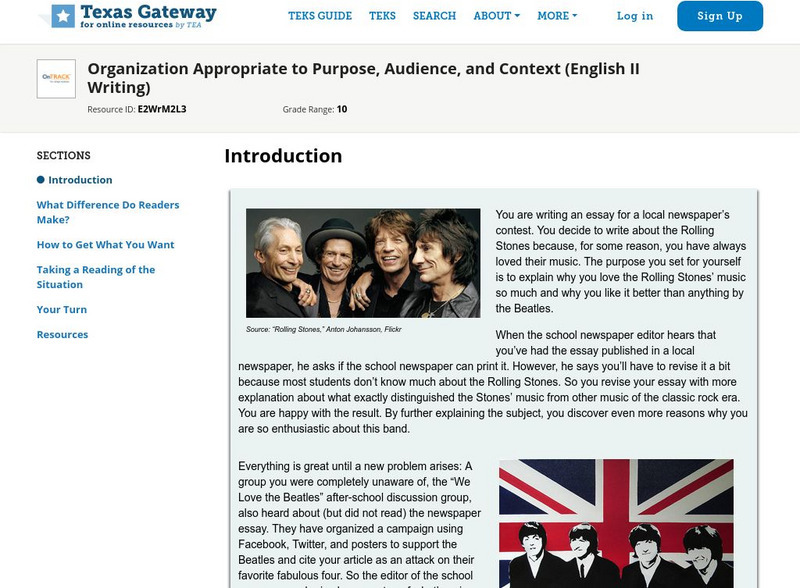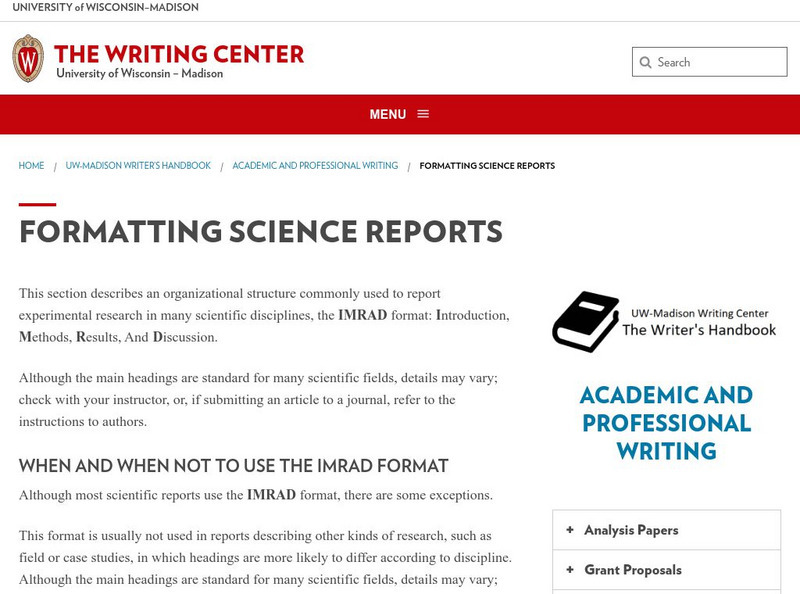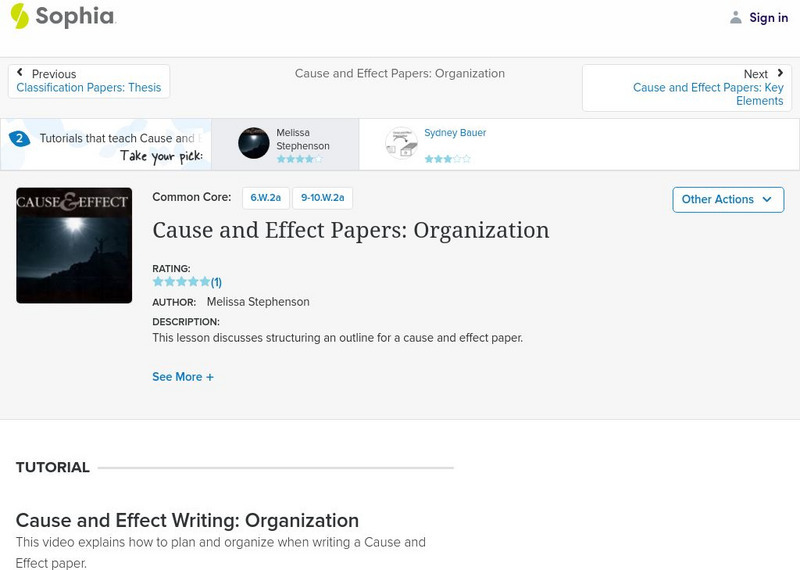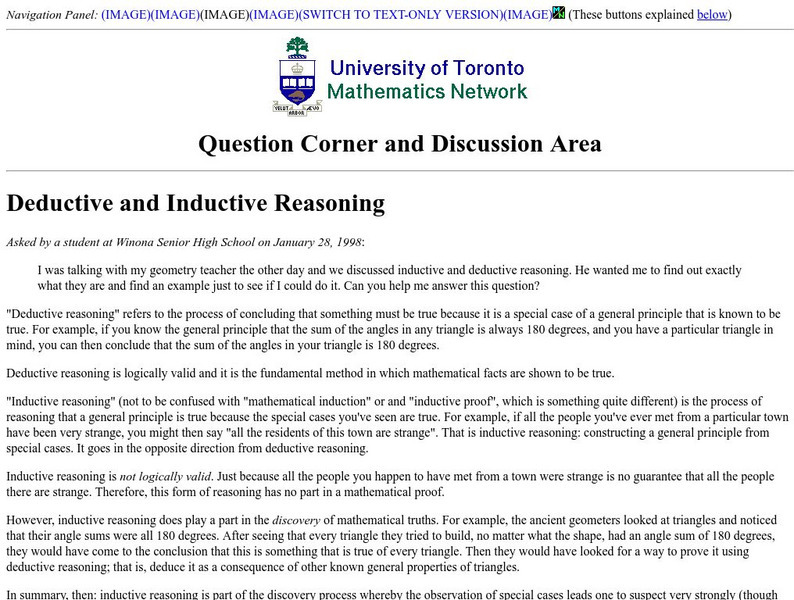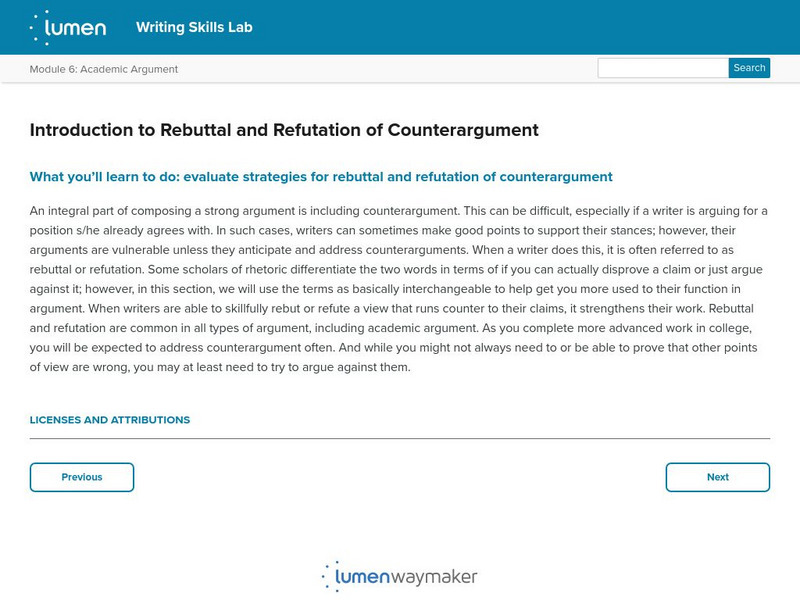Other
Bbc: H2g2 Circular Reasoning
Excellent definition and discussion of the term "Circular Reasoning," including a couple of very clear examples.
Lumen Learning
Lumen: Rhetorical Appeals: Appeals to Logos
This lesson focuses on appeals to logos, or appealing to your audience's logical side including your types of source material, remembering your audience, and being sure to maintain clear lines of reasoning throughout.
Lumen Learning
Lumen: Rhetorical Appeals: Kairos and Logos
This lesson focuses on the 4th logical appeal called Kairos, a time when conditions are right for the accomplishment of a crucial action; the opportune and decisive moment.
Lumen Learning
Lumen: Rhetorical Appeals: Establishing Ethos
This lesson focuses on establishing ethos or credibility. You can establish ethos-or credibility-in two basic ways: you can use or build your own credibility on a topic, or you can use credible sources, which, in turn, builds your...
Lumen Learning
Lumen: Analysis: Evidence
This lesson focuses on evidence in the analysis including being selective with evidence, being clear and explicit, and moving past obvious interpretations.
Lumen Learning
Lumen: Writing Skills: Common Logical Fallacies
This lesson focuses on logical fallacies including defining them, discussing the different types of logical fallacies, and a practice activity.
Lumen Learning
Lumen: Writing Skills: Spotting Logical Fallacies
This lesson focuses on recognizing common logical fallacies and evaluating them in texts. It also provides a practice exercise.
Lumen Learning
Lumen: Writing Skills: Formula for Refutation and Rebuttal
This lesson focuses on the formula for refuting and rebutting counterarguments including accurately representing opposing viewpoints, using a respectful, non-incendiary tone, using reliable information, using qualifying words to aid...
Lumen Learning
Lumen: Writing Skills: Further Your Understanding: Refutation and Rebuttal
This lesson plan focuses on examples of rebuttal and refutation to improve your understanding.
University of Sydney (Australia)
The Write Site: Structuring Your Individual Arguments
A diagram is provided to help students organize an argument. Assertions, sub-assertions, evidence, and counterarguments are included. Click on page 2 at the bottom to see the functions of the above and page 3 to for a practice activity....
Other
Wheeling Jesuit University: How to Write a Cause Effect Essay [Pdf]
This writing lab explains the terms "cause" and "effect" and how to write cause-effect essays.
Texas Education Agency
Texas Gateway: Organization Appropriate to Purpose, Audience, and Context
[Accessible by TX Educators. Free Registration/Login Required] In this lesson, you will learn how to adjust the organization of your essay to make it appropriate for different purposes, different audiences, and different contexts.
Lumen Learning
Lumen: Critical Reading: Supporting Claims
This instructional activity focuses on supporting claims including the distinction between main ideas and supporting details, relationship between purpose and supporting details, sufficient and related support, and support and...
University of Wisconsin
University of Wisconsin: Writing Center: Formatting Science Reports
This site outlines the necessary elements of a scientific report. The site is broken down into the follow segments: title, abstract, introduction, methods, results, and discussion. Within each section is a contents section as well as a...
ClassFlow
Class Flow: Writing Organization
[Free Registration/Login Required] This flipchart discusses writing organization and how the organization of a written work varies based on the type of work it is. Assessment questions follow the lesson. L.9-10.3 knowledge of lang
ClassFlow
Class Flow: Becoming an Effective Listener
[Free Registration/Login Required] This flipchart focuses on the traits of an effective listener and the identification of popular logical fallacies and propaganda techniques. In addition, there is an Activote at the end to check student...
ClassFlow
Class Flow: Graphic Organizer Map Cause and Effect
[Free Registration/Login Required] This graphic organizer flipchart uses the fishbone technique to map cause and effect. It is useful for helping students understand and analyze reading passages, historical events, and scientific...
Sophia Learning
Sophia: Cause and Effect Papers: Organization
This lesson discusses structuring an outline for a cause and effect paper.
University of Toronto (Canada)
Question Corner: Deductive and Inductive Reasoning
A simple discussion of the differences between inductive and deductive reasoning. Helpful to anyone who is having difficulty differentiating between the two.
Lumen Learning
Lumen: Academic Argument: Logical Fallacies
This introduction defines logical fallacies and lists reasons to avoid them. Click next at the bottom of each page for more information about fallacies.
Lumen Learning
Lumen: Writing Skills:introduction to Rebuttal and Refutation of Counterargument
This is an introduction to rebutting and refuting counterarguments. Click the next button on the bottom right for more information about the counterargument.








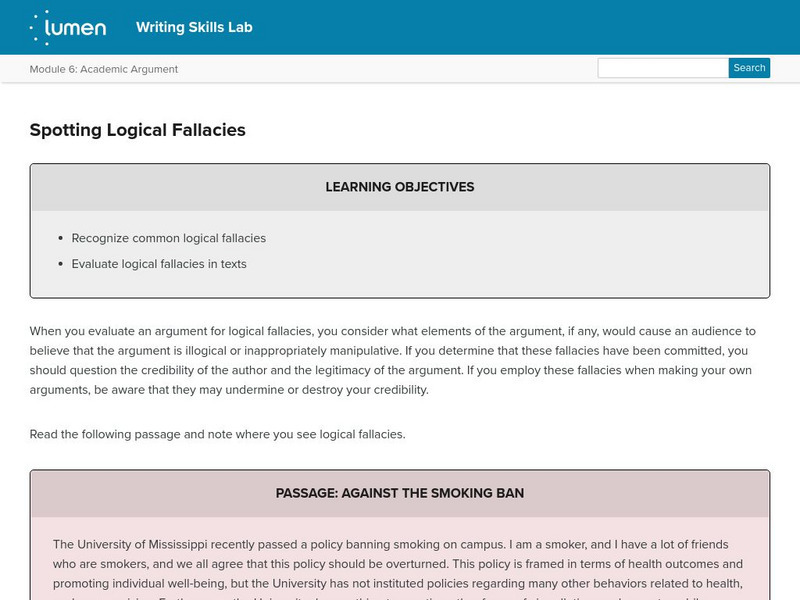

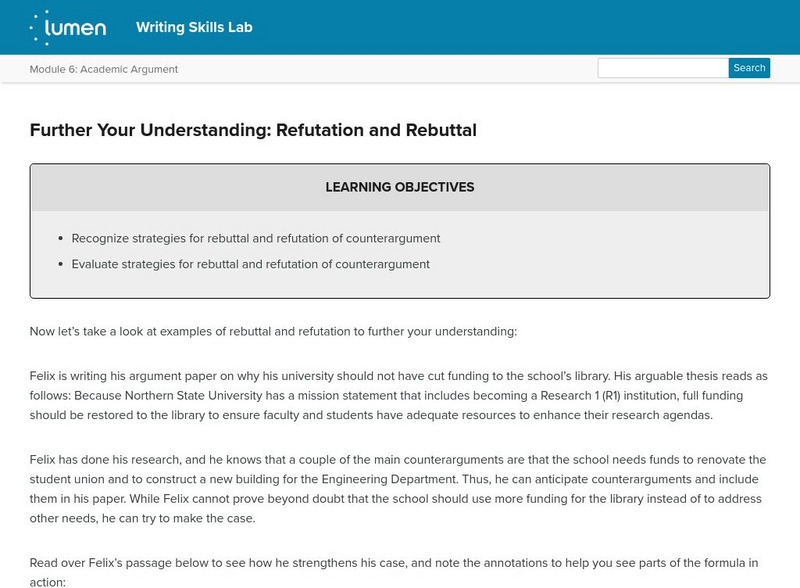

![Wheeling Jesuit University: How to Write a Cause Effect Essay [Pdf] Handout Wheeling Jesuit University: How to Write a Cause Effect Essay [Pdf] Handout](http://content.lessonplanet.com/resources/thumbnails/411265/large/bwluav9tywdpy2symdiwmduymc0xmdmwnc0xztdwmnvvlmpwzw.jpg?1589993216)
